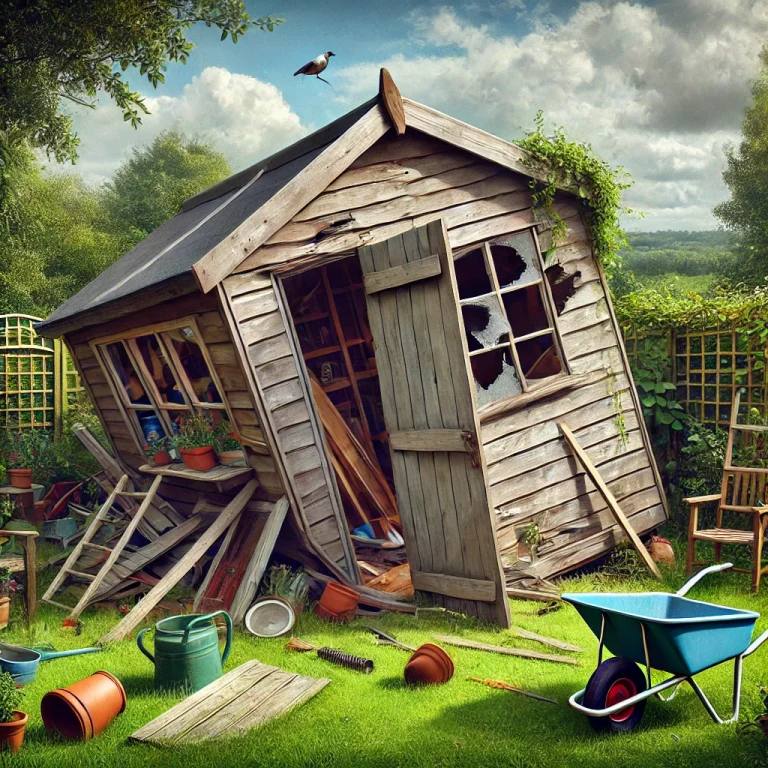
When a shed’s floor falls down or fails, it can be due to several factors, such as poor installation, inadequate support, or material degradation. Understanding these issues can help ensure that your shed, including one purchased from a retailer like Costco, is installed correctly and remains stable. Here’s a guide to help you understand why floors might fail and what you need to know for proper installation.
- Inadequate Foundation: A shed requires a stable foundation to support its weight. Without a proper foundation, the shed’s floor can sag or collapse. Common foundation types include concrete pads, gravel, and treated timber.
- Improper Drainage: Water accumulation around the base of the shed can lead to floor deterioration. Poor drainage can cause the ground to become soft, leading to instability.
- Poor Quality Materials: If the flooring material is subpar or not treated properly, it can rot or weaken over time, especially if exposed to moisture.
- Structural Weaknesses: Insufficient support beams or joists can lead to floor sagging or collapse. The load distribution must be adequate to support the weight of the shed and its contents.
- Ground Settling: If the ground underneath the shed settles unevenly, it can cause the floor to shift or collapse. This is particularly common with sheds built on soil or unsteady ground.
- Improper Assembly: Incorrect assembly of the shed’s floor and support structures can lead to instability. This includes misaligned parts or improperly secured connections.
How to Install a Shed Correctly
When installing a shed, especially one purchased from a retailer like Costco, follow these guidelines to ensure a stable and long-lasting structure:
- Choose a Proper Location
- Level Ground: Select a flat, level area for your shed. This will prevent shifting and settling issues.
- Good Drainage: Ensure the site has good drainage to avoid water pooling around the shed.
- Prepare the Foundation
- Concrete Slab: For a solid and permanent foundation, a concrete slab is ideal. It provides a level surface and prevents moisture from seeping up.
- Gravel Base: A compacted gravel base is a good alternative, providing drainage and stability. Ensure the gravel is level and well-compacted.
- Timber Foundation: Pressure-treated timber or skids can be used to create a foundation. Make sure they are level and properly spaced.
- Install the Floor System
- Joists and Beams: Use properly sized and spaced joists and beams for floor support. Typically, joists should be spaced 12-16 inches apart, depending on the shed’s size and weight.
- Flooring Material: Use high-quality, treated plywood or OSB (oriented strand board) for the floor. Ensure it is securely fastened to the joists.
- Check for Leveling
- Level the Foundation: Use a level to ensure the foundation is perfectly flat before installing the shed. This will prevent future issues with the floor and walls.
- Adjust as Needed: If the foundation settles over time, make adjustments to keep the shed level.
- Assemble the Shed According to Instructions
- Follow Manufacturer’s Guidelines: Adhere to the assembly instructions provided by Costco or the manufacturer. Ensure all parts are correctly aligned and secured.
- Secure All Connections: Tighten all screws, bolts, and fasteners as specified to ensure structural integrity.
- Ensure Proper Ventilation
- Avoid Moisture Build-Up: Proper ventilation helps prevent moisture build-up, which can lead to rot and deterioration of the floor and walls.
- Regular Maintenance
- Inspect for Issues: Regularly check for any signs of damage or wear, especially after heavy rain or snow.
- Address Problems Promptly: Repair any issues immediately to prevent further damage.
Conclusion
A well-installed shed is essential for long-term stability and functionality. By ensuring a proper foundation, using quality materials, and following the manufacturer’s assembly instructions, you can avoid common problems such as floor failure. If you’re buying a shed from a retailer like Costco, carefully read the installation manual and consider seeking professional assistance if needed to ensure a successful setup. Regular maintenance will also help keep your shed in good condition and extend its lifespan.
